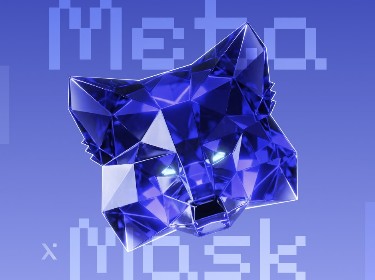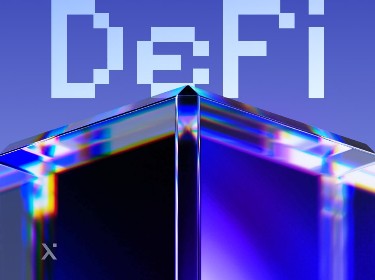If you run a business, you care about the protocol, the consensus model, the privacy guarantees, and the development lifecycle of your future project. Canton.Network may be what you’re looking for.
A quiet giant began moving in a serious volume. How serious? Consider the over $1.5 trillion in monthly repo transactions now being processed on Broadridge’s DLR platform, powered by this very technology. This is now the live, beating heart of a core financial market. This is the Canton Network.
Born from a decade of focused work by Digital Asset and launched in 2023 with a consortium including Goldman Sachs, BNP Paribas, CBOE, and Microsoft, Canton was designed from the ground up to solve the problems that kept real institutions on the sidelines. The market has taken notice.
In June 2025, the network’s creator, Digital Asset, secured a $135 million funding round with participation from the titans of finance – Citadel Securities, DRW, and the DTCC, to name a few. Days later, Nasdaq announced it was connecting its ubiquitous Calypso platform to Canton to enhance collateral mobility.
When this much capital and market infrastructure rallies behind a single protocol, it’s no longer a question of if it matters, but how it works. For any leader making strategic decisions, what matters now is the protocol’s architecture, the specifics of its consensus model, the guarantees of its privacy model, and the realities of its development lifecycle. Our blockchain development experts helped us compose this article, and this is our comprehensive analysis of that machine, that solves DeFi’s biggest risks.
Breaking down the layers: how Canton.Network works
![]()
First, let’s forget the concept of a globally replicated ledger where every node processes every transaction. That model is untenable for finance due to its inherent transparency and performance bottlenecks. Canton’s fundamental design principle is the decoupling of three key functions:
-
-
- State storage & contract execution: Where the data lives and the logic runs.
- Transaction validation: The process of confirming a transaction is valid.
- Transaction sequencing: The process of ordering transactions to prevent double-spends.
-
| Layer | Component | Function |
| Layer 1 | Participant Node | Runs your private data and contracts |
| Layer 2 | Sync Domain | Orders encrypted transactions for a group |
| Layer 3 | Global Synchronizer | Settles transactions across different groups |
In a traditional blockchain, these are tightly coupled. In Canton, they are distinct layers, which is the key to achieving both privacy and scalability.
How to Create DAO Tokenomics
Blockchain vs. DLT: Full Guide
How to Select The Best Blockchain Platform for Your Project
Layer 1: the Participant Node & the Daml Execution Environment
The foundation of the Canton.Network development stack is the Participant Node. This is a sovereign, stateful environment operated by an entity (e.g., a bank, a fund). It hosts parties (the legal entities or actors) and serves as the primary data store and execution environment for Daml contracts. Your ledger is your ledger, you hold the keys, and the data resides on your node.
Central to the participant node is the Daml Execution Environment. Daml is not just another smart contract development language but a strongly typed, functional language with a runtime specification designed explicitly for modeling multi-party rights and obligations.
- Data model & permissions: Daml contracts are defined by templates. A template specifies the contract data, but more importantly, it defines the signatories (parties who must agree to the contract’s creation) and observers (parties who have read-access). It also defines choices, which are the actions that can be exercised on the contract, and who is authorized to exercise them. This permission model is a mandatory, compile-time feature.
- Contract keys: Templates can have keys, which are business-defined primary keys (e.g., a trade ID). This allows for efficient contract lookup without knowing the technical contract ID, a crucial feature for real-world integration.
- Deterministic execution: The Daml runtime ensures that all contract executions are deterministic. Given the same inputs, the output is always the same. This is essential for the validation model that follows.
This deterministic, permissioned environment on the participant node is the first pillar of Canton.Network development’s privacy. All transaction processing begins and ends here, in a controlled, private environment.
Canton Loop
The Canton Network’s first self-custodial wallet
First non-custodial wallet on Canton
Generated $3M revenue in 2 months since launch
Ranked in Top 10 Canton Coin Validator Leaderboard
Explore the case studyLayer 2: The Synchronization Domain (Sequencer)
If every participant node is a private island of state, how do they interact without chaos? This is the role of the Synchronization Domain (or “sync domain”). A sync domain is essentially a sequencing and message-brokering service for a defined set of participant nodes.
Its functions are precise and limited:
- Message routing: It routes messages between the participant nodes connected to it.
- Transaction ordering: It provides a definitive, monotonic ordering of transactions for its members.
- Two-phase commit (2PC) facilitation: It acts as the coordinator for a 2PC protocol to ensure atomic updates across all involved participant nodes.
Crucially, the sync domain is blind. All payloads passing through it are end-to-end encrypted between the participant nodes. The sync domain cannot decrypt or inspect the contents of a transaction. It sees an encrypted blob, timestamps it, orders it, and routes it. This preserves confidentiality while providing the necessary coordination to prevent race conditions and double-spends. Any serious Canton.Network development company must have a deep understanding of this privacy-preserving routing.
Sync domains can be deployed in different topologies. For a consortium of highly trusted parties, a centralized sync domain can be used for maximum throughput. For trustless interactions, a sync domain can be decentralized and run by a set of operators using a Byzantine Fault Tolerant (BFT) consensus algorithm.
Know Your Transaction (KYT) Explained: Understanding its Role in Financial Compliance
How to integrate blockchain into your existing business infrastructure
Canton Network Wallet Development: A Guide on How to Do It Right (and What It'll Cost You)
The consensus model: “Proof-of-Stakeholder”
This architecture leads to a novel consensus mechanism Canton refers to as “Proof-of-Stakeholder.” It is fundamentally different from Proof-of-Work or global Proof-of-Stake.
Here is the transaction lifecycle:
- Initiation: A party on a participant node initiates a transaction by exercising a choice on a Daml contract. This creates a transaction proposal.
- Stakeholder definition: The Daml template’s signatories and observers implicitly define the transaction’s stakeholders. These are the only parties who will be involved in validation.
- Encryption & submission: The initiating participant node encrypts the transaction details for the defined stakeholder set and submits the encrypted payload to a mutually agreed-upon sync domain.
- Sequencing: The sync domain sequences the transaction and broadcasts it to the participant nodes of all stakeholders.
- Validation: Upon receiving the sequenced transaction, each stakeholder’s participant node decrypts it and independently validates it against its local view of the ledger. Because Daml execution is deterministic, they are all guaranteed to reach the same conclusion if their local state is consistent.
- Confirmation & commit: The participant nodes confirm their readiness to commit to the sync domain. Once all required confirmations are received (the first phase of 2PC), the sync domain issues a final commit message (the second phase), and all nodes atomically commit the transaction to their respective ledgers. If any stakeholder rejects the transaction or fails to respond, the sync domain issues a rollback, and the transaction is aborted everywhere.
This model is quite efficient. A transaction is only processed and seen by the parties who have a legitimate stake in it. The rest of the network is entirely unaware of its existence.
Layer 3: The Global Synchronizer & cross-domain composability
The architecture described so far creates secure, interoperable subnets. But how do you achieve composability across these different subnets? This is the function of the Global Synchronizer (GS).
The GS is a specialized, public, and permissionless sync domain operated by a decentralized set of super validators running a BFT consensus protocol. Its purpose is to act as a master coordinator for transactions that span multiple, otherwise independent, sync domains.
When an application needs to compose a workflow that involves assets or parties across different consortiums (e.g., settling a trade from a securities sync domain with cash from a payment sync domain), it uses the GS to coordinate the overarching 2PC protocol. The GS ensures atomicity across domains, effectively stitching them together into a single, cohesive transaction without forcing them to merge or share private data. This creates a “virtual global ledger”, without the need for a physical, globally replicated state machine. This capability is a cornerstone of advanced Canton.Network development.
Finding the right fit for your project: TON vs Ethereum vs Solana – explore here →
Canton.Network’s benefits
![]()
A robust protocol is only as valuable as the problems it solves. The technical architecture of Canton translates directly into tangible benefits and enables financial applications that were previously structurally impossible.
Uncompromised, granular privacy
This is the absolute prerequisite for institutional adoption. Canton’s combination of private participant node state and end-to-end encrypted messaging goes beyond a simple checkbox for confidentiality. It allows financial institutions to transact on a shared, interoperable infrastructure without revealing proprietary trading strategies, client positions, or sensitive commercial terms.
This control over data visibility, enforced at the protocol level by Daml’s permissioning model, is what makes compliance with data privacy regulations like GDPR not just possible, but provable. It means a bank can confidently execute a transaction knowing that no other network participant can see the content of their confidential agreements.
Radical capital efficiency & enhanced liquidity
Traditional finance is plagued by trapped capital*. Billions of dollars are locked up in nostro/vostro accounts or held as collateral against settlement risk during the T+2 or T+1 clearing cycle. By enabling real-time, atomic settlement (T+0), Canton dramatically shortens this cycle, freeing up immense amounts of liquidity. As demonstrated by Nasdaq’s integration with Canton to enhance its Calypso platform, this allows for 24/7 collateral management. Firms can mobilize and redeploy previously static collateral across different markets and asset classes in real-time, optimizing their balance sheets and reducing the cost of capital.
Nostro/Vostro accounts (from the Latin for “ours” and “yours”) are accounts that banks hold with each other to handle payments in foreign currencies. For example, a German bank will hold a “nostro” account in US dollars at an American bank to pay for dollar-based transactions. This system requires banks to park large sums of money in these accounts around the world, tying up capital that could otherwise be used.
The settlement cycle, denoted by “T+“, refers to the time between when a trade is executed (T) and when the ownership of the asset and the cash actually exchange hands. T+2 means this settlement happens two business days after the trade, while the newer standard, T+1, means it happens one business day later. In both cases, there is a delay where the transaction is in-flight, creating risk and trapping liquidity. T+0, or real-time settlement, eliminates this delay entirely, allowing the trade and settlement to occur on the same day.
Code, Capital, and Compliance: A Deep Dive into Canton Network Smart Contract Development
Canton Network Reward System: How Canton Coin Pays Developers to Build Real Value
Elimination of settlement risk
The principle of atomic composability directly attacks one of the most persistent systemic risks in finance: settlement risk, particularly “Herstatt risk” in cross-currency transactions. This is the risk that one party pays out its side of a trade but does not receive payment from its counterparty due to insolvency or other failures.
Canton’s two-phase commit protocol, coordinated by a sync domain, ensures that a multi-leg transaction (Delivery vs. Payment (DvP) or Payment vs. Payment (PvP)) is an “all-or-nothing” event. The assets are exchanged simultaneously or not at all, completely eliminating this category of counterparty credit risk and simplifying cross-border operations.
Drastic reduction in operational costs & complexity
The back office of a typical financial institution is a complex web of systems built to manage reconciliation. It’s the painful process of ensuring everyone’s ledgers match. According to studies by firms like PwC, this legacy infrastructure costs the industry billions annually. By creating a single, verifiable source of truth for any given transaction (visible only to the entitled parties), Canton obviates the need for most of this post-trade reconciliation.
Automating complex workflows via Canton.Network smart contract development reduces errors, eliminates costly manual interventions, and significantly lowers the Total Cost of Ownership (TCO) of financial operations.
True sovereignty and decentralized governance
Participants on the Canton Network retain sovereignty. By running their own participant nodes, they control their own data, their own keys, and their own infrastructure. This prevents vendor lock-in and platform risk, where a central operator could unilaterally change fees, alter rules, or even fail.
Furthermore, the governance of the most critical public component, the Global Synchronizer, is entrusted to the neutral, non-profit Global Synchronizer Foundation under the Linux Foundation. This ensures that the network’s evolution is guided by its participants, for its participants, creating a truly resilient and censorship-resistant market infrastructure.
Streamlined auditing and regulatory oversight
While guaranteeing commercial privacy, Canton’s architecture simultaneously allows for unprecedented regulatory transparency. A regulator can be permissioned as an observer party on any relevant Daml contract template. This provides them with a real-time, immutable, read-only view of all transactions they are required to supervise, as they happen.
This “supervisory node” concept eliminates the need for burdensome, time-consuming, and often incomplete data requests and reports. It makes proving compliance a continuous, automated process rather than a periodic, manual effort.
Accelerated financial innovation
When the underlying infrastructure natively handles the hard problems of privacy, synchronization, and settlement, developers can focus on what they do best: building innovative financial products. The time-to-market for new offerings is drastically reduced because the foundational plumbing is already in place. Firms can innovate at the application layer, confident that the protocol layer provides the required security and interoperability, fostering a more dynamic and competitive financial ecosystem.
These benefits, taken together, represent a fundamental paradigm shift. They move the market from a fragmented system of isolated data silos to an interconnected network that offers the best of both worlds: the global reach and interoperability of a public network with the security and privacy of a private one.
How Canton transforms traditional finance (TradFi)
![]()
Canton allows institutions to upgrade their core infrastructure without sacrificing security or control. The focus here is on efficiency, risk reduction, and creating new, more dynamic markets.
Clearing & settlement
The T+2 settlement cycle for securities is a relic of an analog era, tying up capital and introducing risk. An application built on Canton can achieve T+0 settlement. Delivery vs. Payment (DvP) transactions can be modeled as a single atomic transaction, coordinated by the GS, even if the cash and security ledgers are managed by different entities on different sync domains. The Canton.Network development services to create such a system would upgrade market liquidity.
Syndicated lending
Managing a large syndicated loan between a dozen banks is an operational nightmare of faxes, emails, and manual reconciliation. A shared Daml contract could manage the entire loan lifecycle. Drawdowns, interest calculations, and principal repayments could be executed automatically and synchronized across all participating banks in real-time, with each bank only seeing its own share of the loan.
Asset tokenization
Asset tokenization means creating an asset that can be used as collateral, traded, and settled atomically against other tokenized assets on the network. A real estate tokenization project could be atomically swapped for a tokenized bond, with the transfer of ownership and payment happening in the same indivisible transaction. High-quality Canton.Network development services are essential to correctly model the complex legal and financial rights associated with such assets.
A full list of our tokenization services here →
Boosting institutional DeFi with Canton
![]()
Public DeFi has been a sandbox of innovation, but its lack of privacy and compliance has kept institutional capital on the sidelines. Canton acts as a regulated bridge, allowing the power of DeFi development concepts to be deployed in a secure and compliant manner.
Permissioned liquidity pools
An Automated Market Maker (AMM) like Uniswap could be deployed within a permissioned environment on Canton. Only KYT, KYC or AML-cleared participants could contribute to or trade within the liquidity pool, creating a compliant market for institutional players to trade digital assets with minimized counterparty risk. A knowledgeable Canton.Network development company could build such a platform, meeting stringent regulatory requirements.
Institutional yield farming & collateralization
Institutions could use tokenized money market fund shares as collateral to borrow a bank-issued stablecoin within a single, atomic transaction. This form of “institutional yield farming” would be fully transparent to regulators, auditable, and free from the liquidation risks associated with the volatile price oracles and network congestion of public chains.
Planning on building a yield farming solution? Trust us this endeavor – check out this page
Complex structured products
The true power of composability is building new products. Imagine a derivative whose payout is tied to a combination of a stock’s performance, a bond’s yield, and a credit default swap, all residing on different ledgers. Canton’s ability to atomically compose transactions across these ledgers allows for the creation and risk-free settlement of such sophisticated structured products. Engaging with expert Canton.Network development services is critical to architecting these complex, multi-domain applications correctly. This type of advanced financial engineering showcases the ultimate potential of the network.
Conclusion
The Canton’s architecture is a deliberate and calculated response to the failings of previous blockchain models in the institutional space. By decoupling state, validation, and sequencing, and by building on a foundation of explicit, enforceable permissions with Daml, a trusted Canton.Network development company could provide a viable framework for private, scalable, and interoperable finance. It is complex, but this complexity is necessary to solve the multifaceted challenges of the domain.
The use cases we’ve presented above are the logical applications of the protocol’s core features. For technical and business leaders, understanding this connection is the first step toward building the next generation of financial infrastructure. At our dApp development company, PixelPlex, we’re focused on exactly that – translating this powerful protocol into production-grade systems that deliver tangible value.
If you’re looking for a reliable platform to build your project on – it’s Canton, if you’re looking for a reliable Canton.Network wallet development company to build on Canton – it’s PixelPlex. We’d be glad to hear from you, just leave us a message here.
FAQ
It connects the financial world’s “digital islands.” Canton allows different companies’ private systems to transact with each other instantly and confidentially, removing the need for slow, costly intermediaries.
A private blockchain is secure but isolated. Canton.Network development services offer the same robust security but also allow you to connect and transact with a global network, unlocking far greater value and opportunities than any single private system ever could.
No. While the giants provide liquidity, the network is open. It allows smaller, innovative firms to build specialized services on the same high-security rails, giving them direct access to a massive financial ecosystem that was previously out of reach.
Drastically cutting back-office costs. By creating a single, shared source of truth for transactions, it automates most of the expensive, error-prone manual reconciliation work that drains resources.
It requires specialized expertise. The first step is strategic planning with an expert Canton.Network development company (for example, PixelPlex 🙂) who understands both financial architecture and the protocol to ensure your project is built for success from day one. If your goal is to launch compliant trading venues or tokenized asset marketplaces, partnering with a Canton.Network exchange development company will help you design and implement robust infrastructure on top of the network.




